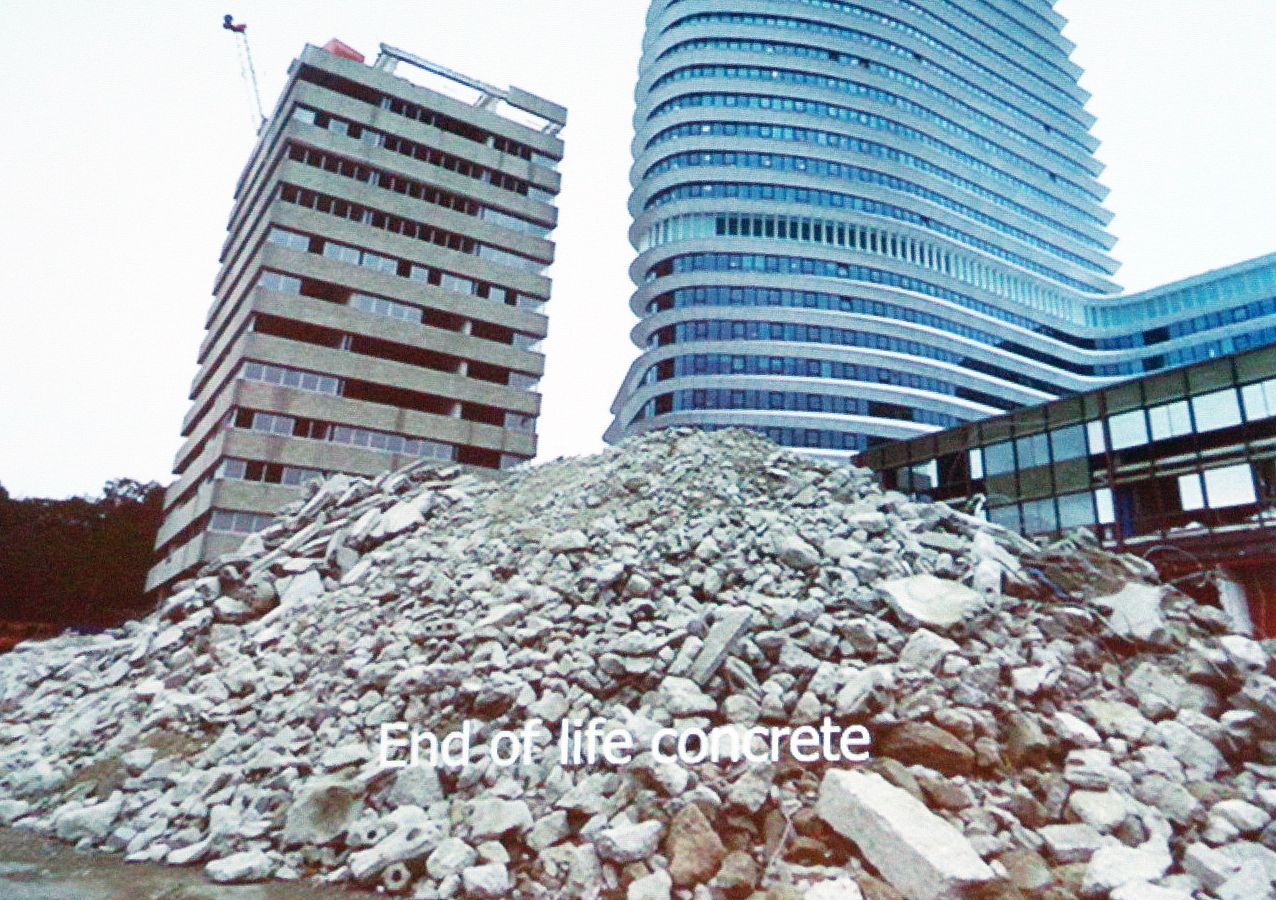Is it possible to innovate in the centuries old technology of concrete? Two PhD research projects pursued at the Faculty of Civil Engineering and Geosciences show you can. Both studied returning concrete’s structure back to its aggregates, one for sustainability, and the other for safety.
Somadeh Lotfi developed a recycling process for concrete demolition waste to recover clean products of sufficient quality to close the material loop. Her technique can recycle coarse aggregates for making high grade concrete that hardens faster and has greater initial compressive strength than concrete made of natural aggregates. It also produces a cement paste that can substitute limestone in new cement production contributing to lower carbon dioxide emissions.
To make it cost effective, she proposes applying smart demolition to lower contaminant levels of the crushed concrete and on site mechanical upgrading with sensors to ensure the quality of the products and cut out transportation. She successfully demonstrated her method on 20,000 tons of end of life concrete from a demolished government building recycled into the structure for a car park. Concrete waste is currently used for road foundations or goes to landfills. The expected demolition of many post-war buildings means Lotfi’s method can be a timely circular solution to manage this growing waste stream.
Ayda Şafak Ağar Özbek investigated high strength porous concrete that fractures and disintegrates after impact. Porous concrete has been used for its sound absorption, water permeability and heat insulation properties but she explored its dynamic properties. She was interested in a violent end of life of the material, with the aim of reducing the hazard of flying debris after an explosion.
Where previous studies aimed to design a resistant material, she experimented with the aggregates and the compaction of an enhanced porous concrete that would fracture into many small-size fragments on impact. It can be used to improve safety in buildings storing munitions and explosives and for protecting important buildings.
She carried out tests at the macro, meso and micro scale, doing experimental and numerical investigations to determine the impact strength and fragmentation behaviour of simulated and real porous concretes. She found that aggregate characteristics have the greatest influence on strength and, while keeping total porosity constant, those with smaller pores were strongest.
Somayeh Lotfi Thesis: Concrete Recycling Process: From Development To Demonstration. PhD supervisor: Dr. P.C. Rem (Faculty of Civil Engineering and Geosciences) Defence date: November 21, 2016
Ayda Şafak Ağar Özbek Thesis: Design and Analyses of Porous Concrete for Safety Applications. PhD supervisor: Dr. K. van Breugel (Faculty of Civil Engineering and Geosciences) Defence date: November 23, 2016



Comments are closed.